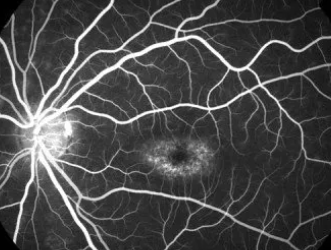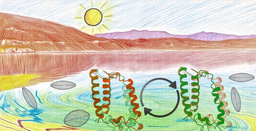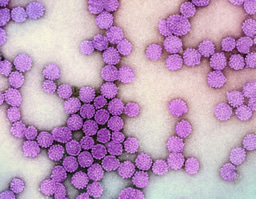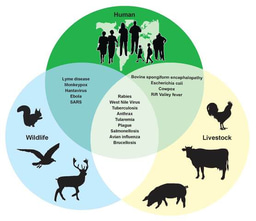Listening to the unheard, youth voices in rare disease policy
Published in Healthcare & Nursing

Rare Disease Day is a moment to shed a light on the overlooked experiences of millions living with rare conditions worldwide. Among them is Stargardt’s disease, a rare genetic eye disorder that highlights the resilience required to navigate life with a condition that often leaves more questions than answers. This blog draws from my journey with the disease, illustrating the obstacles young people with rare diseases face and emphasising the urgent need for youth-inclusive policies.
The reality of rare diseases
Rare diseases affect around 300 million people globally, with over 7,000 diverse conditions identified (1). In India alone, an approximate 70 million individuals live with rare diseases (2), yet the term “rarest of the rare” feels more like an excuse than a call for action. Limited diagnosis, inadequate treatment options, and a lack of awareness make life with these conditions a continuous struggle (3,4). Rare Disease Day is a reminder that each story—each life—deserves attention.
The diagnosis odyssey
While in high school, I noticed a decline in my vision. Words on the blackboard blurred, and bright light overwhelmed me. Stargardt’s disease is a progressive condition that damages the macula and declines central vision (5,6), which was unknown to my family and most doctors I visited.
My condition was treated as a common refractive error until a visit to a retinal specialist led to advanced imaging and genetic testing. The diagnosis was both a relief and a burden: I finally had a name for my condition, but it came with no cure and a reality of irreversible vision loss. While clinical trials and experimental therapies, such as gene therapy and stem cell treatments, are being explored globally (6), they remain largely inaccessible to patients in India due to high costs and regulatory constraints.
Beyond medicine
Living with the disease is a constant challenge—not just with one’s body but also with society. I turned to adaptive tools: magnifiers, screen readers, and audio resources. Yet these came with a steep learning curve and financial costs that are prohibitive for many. Despite legal mandates for inclusive education, implementation remains inconsistent, particularly in public universities where resources are limited.
Socially, the disease created an invisible barrier. Explaining why I couldn’t recognise a friend across the room or read a menu felt like reliving the diagnosis repeatedly.
Policy gaps: The need for youth-centric approaches
India’s National Policy for Rare Diseases (NPRD) introduced in 2021 was a step forward (7). However, it focuses primarily on financial assistance for treatment, neglecting the holistic needs of patients (8). Rare diseases impact every aspect of life—education, employment, and mental health—yet these dimensions remain under-prioritised in policies.
Globally, organisations like the United Nations and the World Health Organisation (WHO) have started recognising rare diseases as a public health priority. The UN’s 2021 resolution calls for inclusive healthcare systems (9). But young people, who often bear the brunt of these diseases early in life, are rarely consulted during policymaking. Their perspectives—on navigating school, finding peer support, and dreaming of futures—are sidelined (10).
Addressing these gaps requires a shift towards a more holistic approach, one that considers not just the medical but also the emotional and social needs of young people. Only then can rare disease policies truly fulfil their promise of improving lives.
The case for youth advocacy
Here are three ways policymakers can prioritise youth voices in rare disease frameworks:
- Youth Advisory Boards: Including young patients in decision-making ensures that policies reflect their lived experiences. Their insights can guide initiatives for mental health support, accessible education, and peer networks.
- Accessible Learning Resources: Schools and universities must be equipped with adaptive tools and trained staff. Inclusive education goes beyond infrastructure—it’s about fostering an environment where every child feels valued.
- Global Collaboration: Rare diseases are a universal challenge. Sharing resources, research, and best practices can reduce the diagnostic odyssey and accelerate the development of affordable treatments.
Rare Disease Day 2025 is our opportunity to ensure that the voices of young people with rare conditions are not just heard but acted upon. Change begins with listening to those who live these realities daily. Together, we can turn endless uncertainty into boundless possibility.
References
- Health TL. The landscape for rare diseases in 2024. The Lancet. Global health. 2024; 12(3):341. https://www.thelancet.com/journals/langlo/article/PIIS2214-109X(24)00056-1/fulltext
- Rajasimha HK, et al. Organization for rare diseases India (ORDI)–Addressing the challenges and opportunities for the Indian rare diseases' community. Genetics Research. 2014; 96:9. https://www.cambridge.org/core/journals/genetics-research/article/organization-for-rare-diseases-india-ordi-addressing-the-challenges-and-opportunities-for-the-indian-rare-diseases-community/D18E24DD5B2374F997F3D73841229248
- Witt S, et al. Living with a rare disease-experiences and needs in paediatric patients and their parents. Orphanet Journal of Rare Diseases. 2023; 18(1):242. https://pmc.ncbi.nlm.nih.gov/articles/PMC10422846/
- Adachi T, et al. Enhancing equitable access to rare disease diagnosis and treatment around the world: a review of evidence, policies, and challenges. International Journal of Environmental Research and Public Health. 2023; 20(6):4732. https://www.mdpi.com/1660-4601/20/6/4732
- National Eye Institute. Stargardt Disease. Nih.gov. 2021. https://www.nei.nih.gov/learn-about-eye-health/eye-conditions-and-diseases/stargardt-disease
- Ghenciu LA, et al. Emerging Therapeutic Approaches and Genetic Insights in Stargardt's Disease: A Comprehensive Review. International Journal of Molecular Sciences. 2024; 25(16):8859. https://pmc.ncbi.nlm.nih.gov/articles/PMC11354485/
- Details of National Policy for Rare Disease 2021. Pib.gov.in. 2024. https://pib.gov.in/PressReleaseIframePage.aspx?PRID=2043516
- Jakasaniya D, Tekwani R. A review on National Policy of Rare Diseases, 2021. https://jgu.s3.ap-south-1.amazonaws.com/jsgp/A+Review+on+National+Policy+for+Rare+Diseases+-JJPP-Volume-6-Issue-I.pdf
- UN resolution on persons living with a rare disease and their families - NGO Committee for Rare Diseases. 2021. https://www.ngocommitteerarediseases.org/un-resolution-on-persons-living-with-a-rare-disease-and-their-families/
- Statement for Rare Disease Day. WHO. 2018. https://www.who.int/news/item/27-02-2018-statement-for-rare-disease-day





Please sign in or register for FREE
If you are a registered user on Research Communities by Springer Nature, please sign in